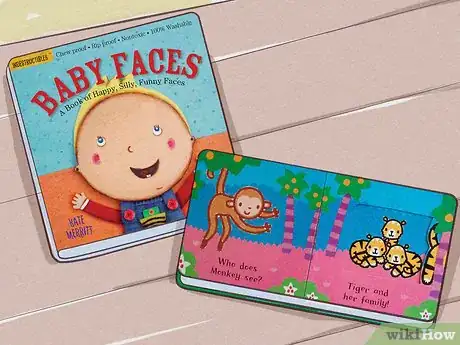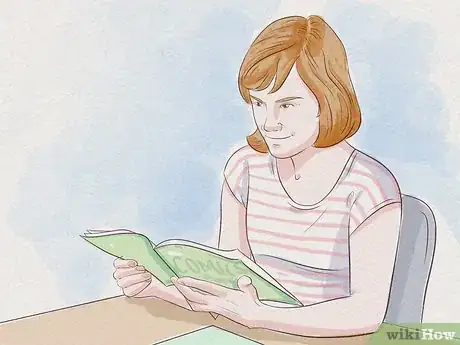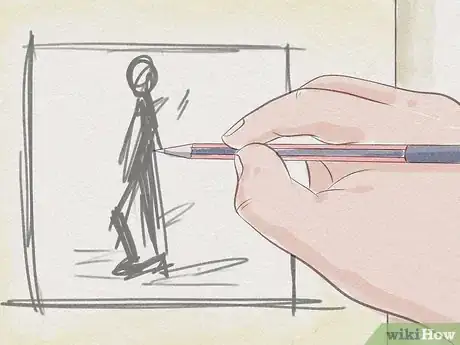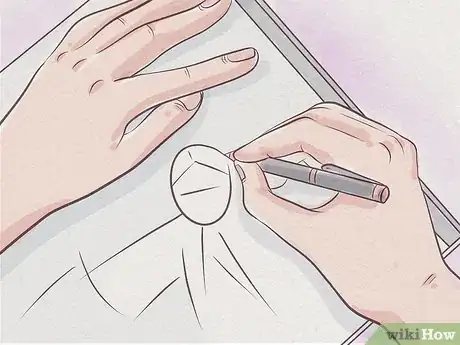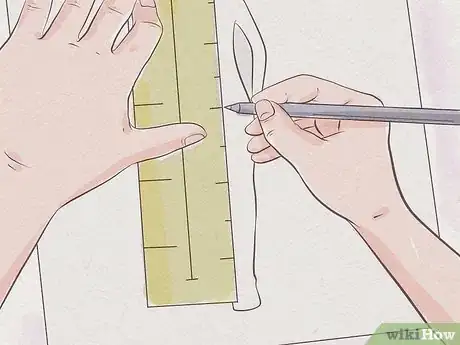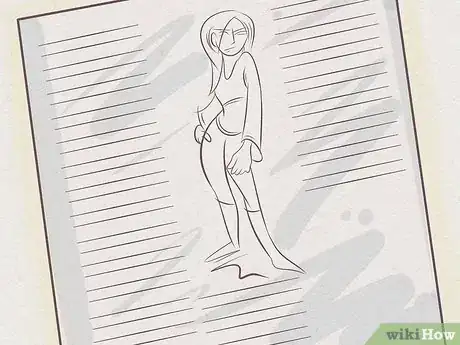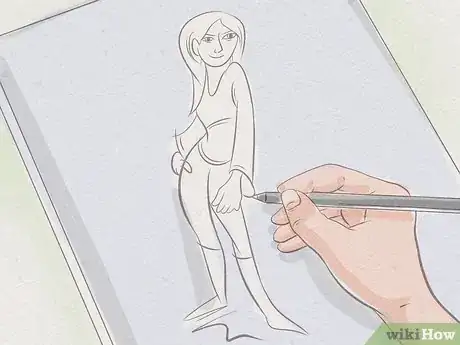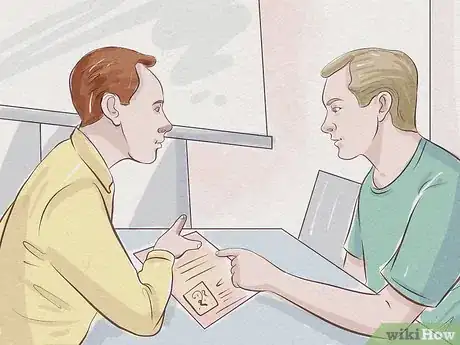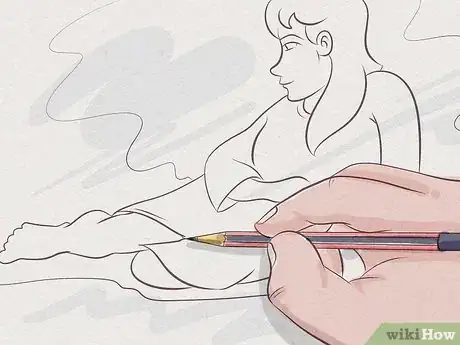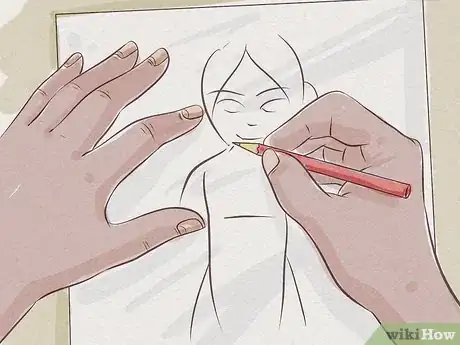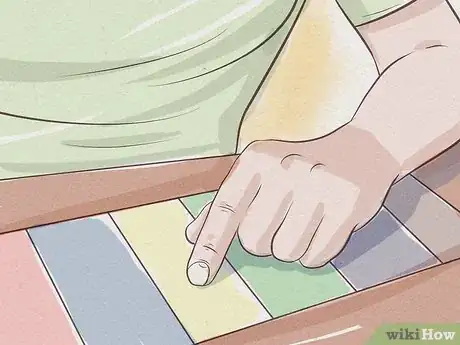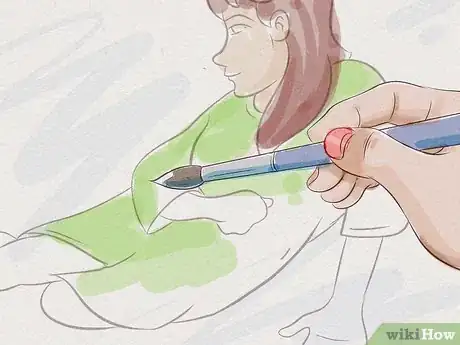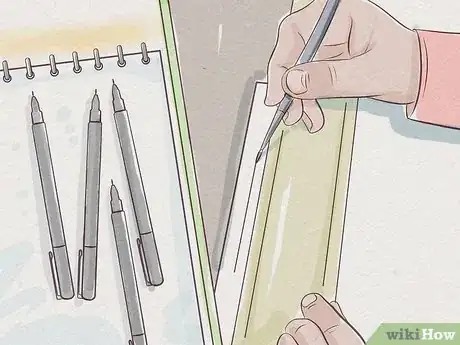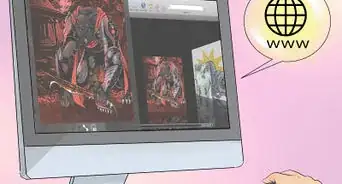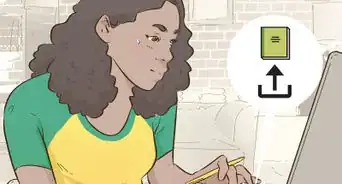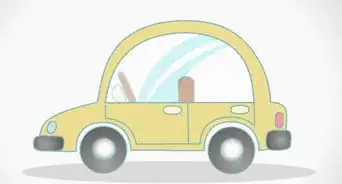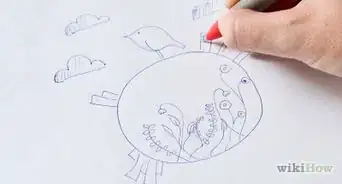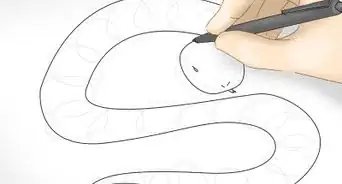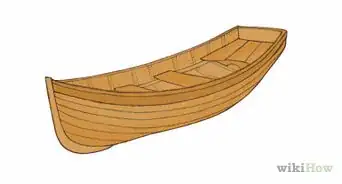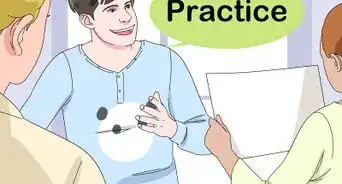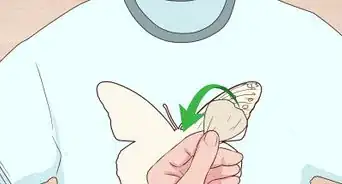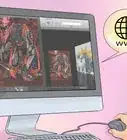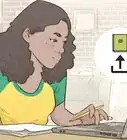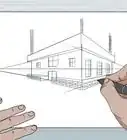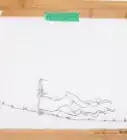This article was co-authored by Kieren Dutcher. Kieren Dutcher is a Professional Artist and a Teaching Artist at the NIAD Art Center in Richmond, California, and other venues around the Bay Area. With 30 years of experience, she specializes in colorful illustrations inspired by folk art, nature, and color. Kieren earned her Master of Education in Art Education from San Francisco State University and her BFA from the California College of the Arts. Her work has been published by St. Martin's Press, Uppercase Magazine, Highlights Magazine, in hospitals, and on TV. Her picture book Chinese and English Nursery Rhymes: Share and Sing in Two Languages (2010) won best book of the year from the Chinese American Library Association.
There are 7 references cited in this article, which can be found at the bottom of the page.
wikiHow marks an article as reader-approved once it receives enough positive feedback. In this case, 100% of readers who voted found the article helpful, earning it our reader-approved status.
This article has been viewed 382,164 times.
Writing an excellent story for a children’s book is only half the battle. Even the most engaging plots simply won’t come to life without vivid illustrations to match the text. Luckily, by brainstorming, communicating with the book’s author, and using a simple method of watercolor illustrating, you can bring bring vibrancy and joy to your children's books.
Steps
Conceptualizing and Brainstorming
-
1Obtain and study the writer’s brief. If you are contracted to illustrate a book, oftentimes writers will provide you with a brief--a list of notes suggesting the main actions in each spread of the book. Study this carefully, and try to remain faithful to the author’s intentions. If you are illustrating your own book, you have unlimited creative license![1]
-
2Tailor images based on reading level. Different age ranges of readers require different kinds of illustrations. If you are writing for very young children, each major plot movement may need to be portrayed in your illustrations in obvious and easy-to-follow ways. Slightly older readers who can read most or all of the story themselves, however, may only require illustrations that portray central themes and moments in a chapter.[2]Advertisement
-
3Gain inspiration from the work of other artists. There’s no shame in consulting the styles of other successful children’s books for ideas. Additionally, look to other forms of art--such as paintings, textiles, or film--to get ideas for the general aesthetic of your images.
- If you’re writing for younger audiences, the works of Dr. Seuss might be a great place to start; his whimsical and original style paved the way for a great deal of other children’s artists.
- Try to look at art related to the setting of your story. For example, if you’re illustrating a tale about knights and castles, you should try researching art from the middle ages.
Sketching Basic Images
-
1Draw thumbnail sketches of the book. These small, un-detailed sketches--only a square inch or two in size--will allow you to trace out the visual flow of the whole book. There’s no need to erase or revise these; just quickly draw and let your ideas flow. Focus on landscape design, focal points, and general scene layout.[3]
-
2Draw some study sketches of your story. Focus on character development, exploring a range of potential expressions, postures, and moods for each character you intend to illustrate. You can use these as references throughout the whole illustration process.[4]
- For example, if your main character begins the book in a sad state and ends happy, try drawing him or her in both poles of emotion, developing intermediate expressions in between.
- Practicing drawing the same character in different positions so you can get better at poses.
-
3Create a sketching template. Each illustration you produce will eventually cover one or two pages of a physical book, so it’s important to match the dimensions of your sketch with those of your final product. Try creating a precise grid with a pencil and a ruler on your sketch paper before sketching your scenes.[5]
- If your illustrations cover two pages, make sure to mark the area occupied by the spine of the book, and avoid sketching important details in this space.
- Make sure to determine where the author intends to place the text on each page. Mark these areas with a grid, and avoid sketching over them with details.
-
4Work with the text. Your illustrations should seamlessly follow the plot of the book as printed on each page. Try to capture details portrayed in the story, and look for ways to subtly foreshadow events in coming pages with your images.[6]
-
5Check for consistency. Make sure each of your characters are easily identifiable across the entire book. Check for consistent clothing, coloration, and expressions. If characters are hard for children to identify across multiple spreads, they may struggle to follow the plot of the book.[7]
-
6Share your sketches with your client. If you are illustrating for a client, be sure and run your sketches by them before proceeding. At this stage, images are relatively easy to alter or replace, and it is important to have the author’s full approval and feedback before you move on to painting.
-
7Prepare final sketches of each spread. Using your study sketches for reference, resize your images to their target size and add any extra details--objects, textures, or scenery--you want to put in the illustration. To scale accurately, try creating a measured grid over your study sketches, and simply reproduce them one quadrant at a time in a larger grid scaled to your final dimensions.[8]
Painting and Finishing Your Image
-
1Transfer your sketches to watercolor paper. Before you bring your sketches to life with paint, you will need to transfer them to the appropriate paper. For a simple solution, try photocopying your sketches directly onto watercolor paper using a printer.
- If your printer is unable to handle heavy watercolor paper, try a traditional charcoal transfer. Rub the back of your sketching paper with charcoal, attach it charcoal-side down to your watercolor paper, and retrace the image. Upon removing the sketch paper, you should be left with a carbon copy of your original sketch on the watercolor paper.[9]
-
2Determine your colors. Before painting, whip up a quick thumbnail study of your color palette. The colors of a children’s book can contribute as much to the mood and feel of the work as design of the drawings, so make sure to consult with the author concerning the book’s hues. Bright, vibrant colors often convey cheerful emotions, while dark amber and dark blues can give your illustrations a more somber feel.
-
3Paint with a watercolor brush. If you are new to painting with watercolors, you may want to produce some extra carbon copies for practice before attempting your final piece. Remember: painting with watercolors takes a lighter touch than other forms of painting. Brush lightly, and practice with multiple drafts to develop your skills.[10]
-
4Define your lines with a pen. For extra contrast, definition, and pop, add pen outlines to some or all of your lines. To prevent bleeding, try using a pen with waterproof ink.
- For a more comic-like feel with harder, firmer edges, try outlining your lines with ink before painting, and simply filling in the lines.
- Remember: ink is optional! If you are aiming for whimsical, abstract feel, limiting your outlines or leaving them out altogether are both viable options.[11]
Community Q&A
-
QuestionCan I use a computer to draw illustrations?
 Community AnswerYou can certainly use programs like Photoshop to create art for your children's book, but a drawing tablet is really the best option for high quality illustrations.
Community AnswerYou can certainly use programs like Photoshop to create art for your children's book, but a drawing tablet is really the best option for high quality illustrations. -
QuestionCan I use water color paint to illustrate my children's book?
 Community AnswerYes, you absolutely can.
Community AnswerYes, you absolutely can. -
QuestionHow do I illustrate with colored pencils?
 Lindsey AdamsCommunity AnswerThe brand of colored pencils is very important. Some brands have different sets of colored pencils that allow the illustrations to have different textural uses. Colored pencils can be oil-based or water-based, so knowing how you'd like the flow of color and texture prior to investing in colored pencils may save you time and money. Also, there are tool aides you can use with colored pencils that can blend, erase and more depending on your coloring needs.
Lindsey AdamsCommunity AnswerThe brand of colored pencils is very important. Some brands have different sets of colored pencils that allow the illustrations to have different textural uses. Colored pencils can be oil-based or water-based, so knowing how you'd like the flow of color and texture prior to investing in colored pencils may save you time and money. Also, there are tool aides you can use with colored pencils that can blend, erase and more depending on your coloring needs.
Things You'll Need
- Sketching paper
- Watercolor paper
- Watercolor paints
- Eraser
- Graphite pencils
References
- ↑ https://www.artistsandillustrators.co.uk/how-to/family-art/281/how-to-illustrate-a-childrens-book
- ↑ https://letterpile.com/misc/How-to-Illustrate-a-Childrens-Book
- ↑ https://www.thoughtco.com/thumbnail-sketching-to-help-with-drawing-4077911
- ↑ https://www.artistsandillustrators.co.uk/how-to/family-art/281/how-to-illustrate-a-childrens-book
- ↑ https://www.theguardian.com/childrens-books-site/gallery/2015/mar/24/korky-paul-how-to-illustrate-books
- ↑ https://letterpile.com/misc/How-to-Illustrate-a-Childrens-Book
- ↑ https://letterpile.com/misc/How-to-Illustrate-a-Childrens-Book
- ↑ http://www.paintdrawpaint.com/2010/10/watercolor-basics-transferring-drawing.html
- ↑ http://www.paintdrawpaint.com/2010/10/watercolor-basics-transferring-drawing.html
About This Article
To brainstorm your illustrations for a children's book, start by studying the writer’s brief, which is a list of notes recommending the main action in each spread of the book. Next, match your images to the intended audiences’ reading level. Young children may need to see every plot movement in a clear and easy manner, whereas older readers might only require illustrations that show central moments. Once you have several sketches complete, check for consistency of clothing, coloration, and expression so that characters are easily identifiable throughout the book. If you want to learn how to use watercolor paints to add color to your illustrations, keep reading the article!

